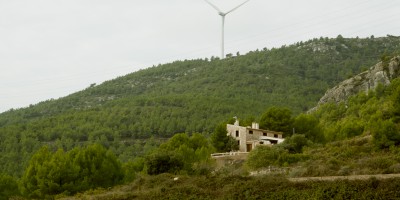Leisure
Wine tourism
The province of Tarragona is situated in zone of mountains blessed with the perfect climate for producing wines and cavas (Spanish champagne). The economy of many of the communities in this area depends almost exclusively on the cultivation of grapes and wine production, much of which is carried out by agricultural cooperatives that are entirely devoted to winemaking.
Many of the “designations of origin” in the zone are recognized for their exceptional quality, among them the regions of Penedès, Priorat, Montsant, Conca de Barberà, Terra Alta and Tarragona.
The D.O. Tarragona, established in 1976, covers more than 10,000 hectares of vineyards worked by forty-eight different producers.
Winemaking is an essential facet of local identity.
There are many shops and restaurants located on the premises of wineries or devoted exclusively to the art and science of winemaking, a sign of the strong, symbiotic relationship between oenology and regional identity.
https://www.dotarragona.cat/viscellers.php

Mas Vicenç Winery
Mas Vicenç, a winery in Cabra del Camp, hosts wine events that make perfect friend and family outings. These excursions offer an excellent opportunity to learn some of the secrets of the trade.
Visitors can choose between a guided trek through the vineyards, a wine tasting led by Mas Vincenç’s oenologist or a guided tour of the entire winemaking facilities.

Cooperativa Barbera de la Conca de Sarral
The art and science of winemaking is transmitted from generation to generation in Portell. The partners of this cooperative are the backbone of local production. Day after day, they care for the vineyards scattered throughout the region and create wines appreciated throughout Spain and the world.
The 12,000m2 facility owned by Vinícola de Sarral SCCL is equipped with up-to-date technology that ensures quality production from the grape harvest through the bottling process.
This magnificent winery, which was built in 1914, is a fine example of Catalan art nouveau architecture, and was once described by author Àngel Guimerà as a “wine cathedral”.
http://www.cava-portell.com/index.php/cat//
Rutes
Mas del Traça is located at a strategic crossroads between the counties of Alt Camp and Conca de Barberà, a zone that has been marked by a long succession of important historical events.
Alt camp has been an important border zone since the Frankish military incursions of the eighth and centuries. It changed hands many times before it experienced a period of peace marked by the founding of the Cistercian monasteries of Santes Creus, Poblet and Vallbona during the mid-seventh century.
However, the repopulation and Christianization of the zone that followed the expulsion of the Arabs did not bring a lasting stability. The fourteenth century saw the emergence of various groups of bandits that continued to plague the region well into the nineteenth century.
This area was occupied during the Peninsular Wars and was also the scene of many battles between liberal and monarchist factions after the collapse of the Napoleonic regime.
The Carlist Wars plunged the region once again into a prolonged state of chaos.
A number of historical routes commemorate these events. Visitors interested in exploring the history trails that criss-cross these counties should look for signs indicating GR© (long distance), PR© (short distance) and SL© (local) routes.
The region also provides excellent opportunities for trekking, biking, trail riding, hunting, fishing and mushroom hunting, etc.
The Cistercian route
The Cistercian route highlights the Cistercian heritage sites located throughout the 65 municipalities within the counties of Alt Camp, Conca de Barberà and Urgell.
Each of these counties is home to one of the three Cistercian monasteries that together form a unique artistic and cultural heritage: Santes Creus, Poblet and Vallbona de les Monges.
This route offers not only a glimpse of medieval monastic life, but also an opportunity to discover other facets of the region’s heritage, from pristine landscapes and historical monuments to local festivals, handcrafts and fine wines and cavas.
Altres activitats a la zona
- Diputació de Tarragona
- Punts d’interès
- Descobrim la “Catalunya Medieval” a la comarca de l’Alt Camp
- Senderisme
- Rutes BTT
- Rutes a Cavall
The Ruta de la Capona
This interesting route highlights the many typical hand built stone agricultural and pastoral huts (constructed without the use of any kind of mortar) that dot the zone.
The sculptural forms and interior arches of these structures, as well as the agricultural artefacts many still contain, make this trail a fascinating adventure.
A trek along the ruta de la Capona is a perfect family outing that gives children an opportunity to see what rural life was like not so long ago.
https://ca.wikiloc.com/rutes-a-peu/la-capona-9209035
Llocs d'Interès
Santes Creus
Santes Creus, a town located on the left bank of the Gaià River, is the government seat of the municipality of Aiguamúrcia and home to the Real Monasterio de Santa Maria de Santes Creus, one of the jewels of Catalonia’s twelfth-century Cistercian heritage.
It features several points of interest related to the nearby monastery.
Santa Creus’s twelve-hectare “alameda” (poplar grove), a forested strip along the banks of the river recognized by the government of Catalonia as an area of particular natural interest, is also one of the most popular sites in the area.
Vimbodí i Poblet
Vimbodí i Poblet is a town located in the southeastern part of the county of Conca de Barberà.
It is the site of a number of architecturally significant landmarks, among them the impressive Monastery of Poblet, one of the most important monastic buildings in Europe and the largest on the Catalan Cistercian route. Of the two Cistercian monasteries on this route that originally housed monks, Poblet is the only one to maintain an active community.
Vallbona
The town of Vallbona de les Monges is located in the county of Urgell. The twelfth-century Monastery of Santa María de Vallbona, the most important abbey led by a community of nuns in Catalonia, has been a local landmark for more than 850 years.
This historic site, which still houses a number of Cistercian nuns, is partially open to the public and continues to be an active spiritual, cultural and artistic institution.










